Dock lines and preparation for hurricanes is an important topic right now with a hurricane headed somewhere! There’s one post already in the Hurricane Preparedness series dealing with dock lines, but I have additional photos from when we left Winterlude in May, so this post revisits the issue. Keep in mind, preparing your boat for a hurricane, there are no right and wrong answers, each situation is completely different. What we think might be right for Winterlude might be all wrong for your marina — and come to think of it, maybe all wrong for the next hurricane because each behaves differently.

While you can never be certain your dock lines are set correctly, we always leave our lines set as if we’re expecting a hurricane tomorrow. The biggest dilemma is whether to leave the lines set for storm SURGE or no water. When Hurricane Charley directly hit as a Cat 4 on our marina in 2004, we had all our lines set for a storm surge — all the predictions were for as much as 15′ of storm surge. That much water would have washed boats right off their docks. But the storm literally sucked ALL the water out of the marina and the boats sat in the mud. The storm surge that did come in, came in as a solid wall of water with the boats sitting in the mud. Boats on the side of the dock closest to the wave were pushed under and through the docks, boats on the far side were pushed away. Because we were on the far side of the dock, we sustained almost no damage. We were extremely lucky. Our lines were set for surge, as were most everyone’s, but when the water washed out and then came back in so ferociously, the lines were loose enough to let the boats slam into the docks. Minimal damage was twisted, mutilated or destroyed bow pulpits, damage increased substantially from there including boats slammed through the dock, sunken and masts broken like toothpicks.
1. First, if you have any choice, consider a floating dock. In our marina there was one floating dock and we were not on it. Theoretically, a floating dock will float up and down with the surge. Hopefully the posts have been engineered long/tall enough to accommodate a major surge and won’t let the dock itself float off the top!
2. Next, stand on your dock and LOOK at the boat. Try to imagine a wall of water coming through your marina from each direction possible and what would happen to your boat. Then try to engineer a web of lines that will have the best chance of keeping her safely in the middle of the slip and out from under the dock, and likewise side to side.
3. While you’re observing the boat in the slip, look around … another major reason for damage is clanking masts. Make sure your mast is clear of your neighbor’s masts if the boats should gyrate side to side wildly. You don’t want your boat to be fine, but with a broken mast because it tangled with your neighbors! Set your boat in the slip with clearance if the masts start dancing. You may need to consider turning the boat around in the slip to get the best clearance. … or better yet, have power boats on each side (as we were when we left Winterlude) so masts aren’t an issue.
4. Check with your marina on lines – different marinas have different preferences for whether lines should be adjustable from the boat or from the dock. This will impact the next several steps, so make a determination ahead of time and make sure all the lines adjust the same, not haphazard some from the dock and some from the boat. In general, if your marina has no guidelines, it’s usually best with fixed docks to have the lines adjust from the boat – that way if the docks are under water as happens frequently in hurricanes, lines can still be adjusted from the boat. In the hurricane prior to Charley, dock attendants told stories about how they were still “walking” docks and adjusting lines until the water was over a foot over the docks! Yikes! On floating docks it’s not as critical, and a marina we were in up the Neusse River NC preferred we have the lines adjustable from the dock.

5. Begin your web of lines. Start by insuring all the lines you’ll be using are in good shape. A hurricane will exploit any weakness it finds and lines that are already showing wear or chafe will be asking for trouble. Bow and stern lines will keep the boat centered side to side in the slip. Be careful to consider storm surge when choosing the cleats to tie these lines to — you may be better off running them to more distant cleats than the closest available if you have a choice. Longer lines mean there’s less slack in the line, it can stay more taunt and still allow for movement up and down while doing the job of keeping the boat centered side to side in the slip.
6. Be sure to use spring lines, spring lines will keep your boat centered in the slip fore and aft, not pushing forward into the dock. Spring lines are very important step and we saw boats that didn’t use them damaged severely during Hurricane Charley. Be sure they’re rigged both fore and aft. Our spring lines are almost the length of the boat – 37′ – to allow us max flexibility in how we want to rig them. Here is a photo showing the spring lines in place. They are tied higher than normal on the rear pilings to allow for as much surge as possible – hopefully they won’t float off because there’s a hook for extra line keeping them in place.

7. Once your first round of lines are in place and you’re happy with your spider web, then add a second set of lines. These lines can be to the same places, or different depending on your slip set up. Keep in mind the same principles as #4 & #5 above when setting the second set of lines. Duplicate lines may have two chances just in case the primary line fails.
8. Chafe Gear in Place. ANYWHERE a line touches anything, you will need chafe gear. We have chafe gear in place where lines go over the edge of docks, through chalks on the boat, around a piling, even where two lines cross, we try to rig chafe gear. Different kinds are used depending on where they’ll fit. We have some “store-bought” red chafe gear that’s great, but not flexible or small enough to fit through the chalks on the boat, so we use old firehose and other hose for those. It’s not ideal, but nothing else will fit and we figure something is better than nothing. Keep in mind, chafe gear will move during a storm. We use small line on every chafe guard to try and keep them in place as long as possible. Regardless, it seems when we return to the boat six months later, the chafe gear is katiwampus! You should have your caretaker check it immediately prior to a hurricane.
9. Fenders in Place. Keep in mind, fenders will only help if they are positioned to be in place when the hurricane shoves your boat around. Obviously a fender board provides a better chance of being in place than a single fender, but we don’t have a fender board, so we’re using fenders. We’re using a combination of fenders turned horizontal tied to pilings and fenders vertical on the widest part of the boat. Time will tell if the fender placement is helpful or useless. The only thing you can do is place them as best you can, but do place them. Attaching them to the pilings has worked well for us, although in Hurricane Charley, our biggest damage was from where the fender burst from the pressure against a piling and Winterlude sat in the mud, leaning directly on that piling. Thank goodness the piling didn’t break!
10. Get off the boat and go someplace safe during the hurricane. Remember that immediately after a hurricane passes, cell towers may be down so contact with your caretaker may be nonexistent. After Hurricane Charley we didn’t hear from our caretaker for three days…. the longest three days of my life!!!
Keep in mind, no one can predict how a hurricane will behave, so there is nothing absolute in how to prepare your boat. Remove anything that provides resistance to wind, set the dock lines, chafe gear and fenders and leave knowing you’ve done everything you can to protect your floating home. Do you have other suggestions for hurricane dock lines? Please leave a comment! THX! Jan
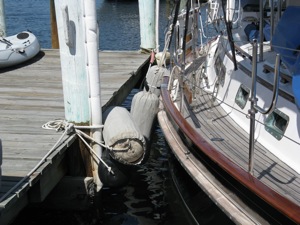
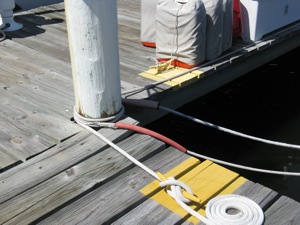
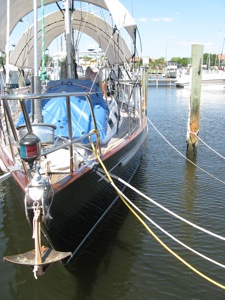
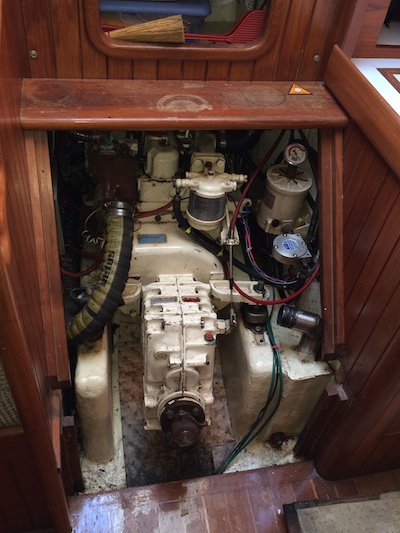
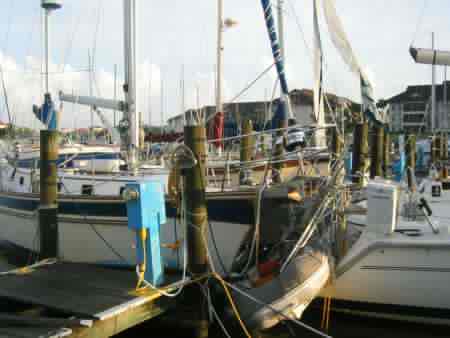
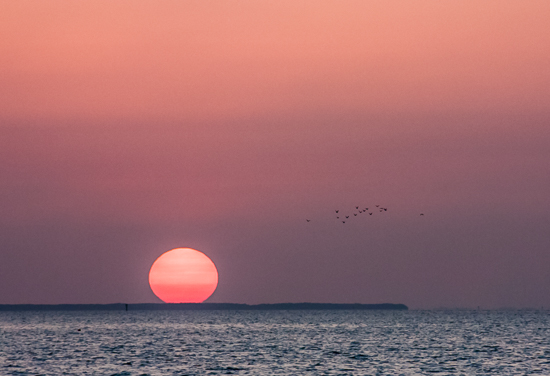








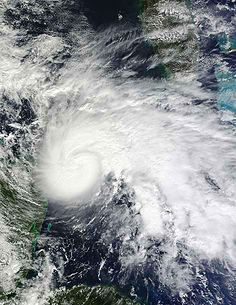
Wonderful lessons here for us first timers. Thanks for taking time to teach us what to do! 🙂
Having followed your blog for a bit now I’ve realized that your plans to head down to your boat are going to help us determine when we make the jump from Texas to Florida. It seems that a storm will hit when you are scheduled to go! Hope all is well with you 🙂
Julie — SO true! Two years ago in mid-November we decided to leave Panama to sail back to the Bay Islands – in time to surprise a cruising friend for his birthday. Several weather sources gave us a full week’s weather window. After we left, Hurricane Ida formed & followed us into Providencia – then hit Nicaragua 100 miles west of where we were anchored! Sometimes I think we’re just jinxed!
Modern technology allows us be warned of an getting close to hurricane, therefore we can get ourselves to basic safety. Nevertheless, it is a bit more work to get the boat out of harms method.
[…] Setting dock lines […]
I like that you provided some tips on revisiting dock lines such as considering using a floating dock. A floating dock is designed to float up and down with the surge. Hence, if the design was engineered properly, there shouldn’t be any problem if you ever plan to dock your boat in one of these floating docks. Plus, it wouldn’t hurt to make sure that your lines are completely locked and aligned to ensure that your boat is properly tied up. I would definitely keep this in mind if I were to dock my boat. Thanks.